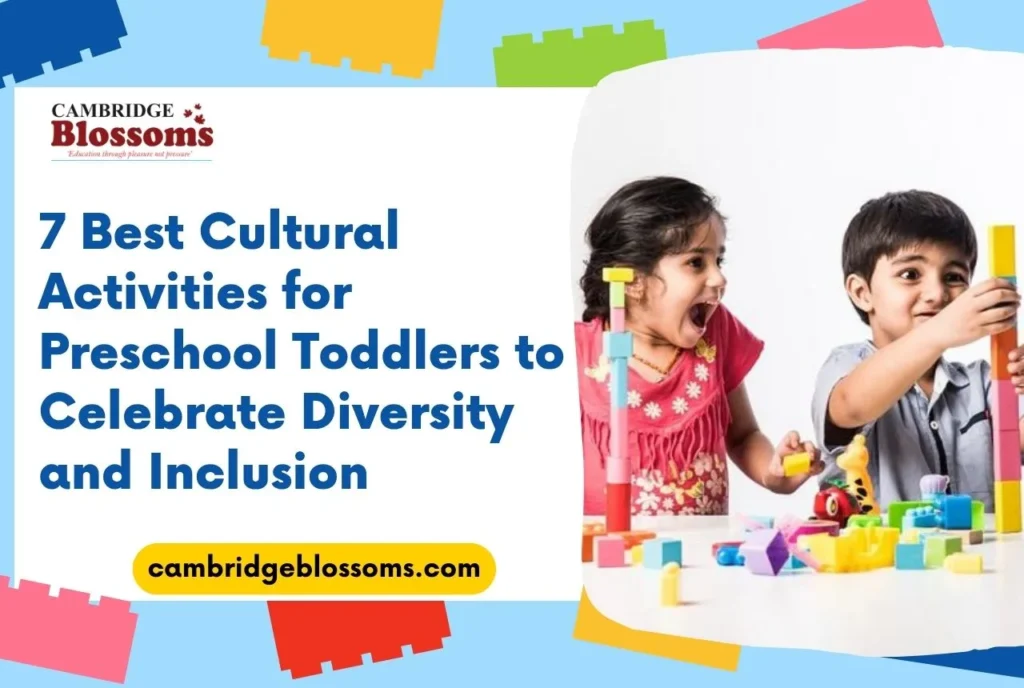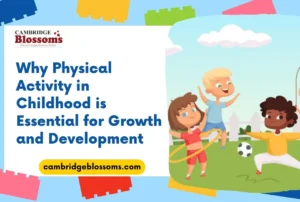In today’s interconnected world, cultural activities for preschool toddlers play a vital role in fostering cultural awareness from an early age. Preschool is a foundational stage where children begin to form their understanding of the world around them—including its rich diversity. Introducing these activities not only enhances their cognitive and social development but also builds empathy, respect, and inclusivity.
Through fun, interactive experiences, young learners can appreciate various traditions, languages, music, art, and customs from across the globe. These early exposures help shape open-minded individuals who embrace global citizenship with kindness and curiosity.
This article highlights seven engaging cultural activities designed specifically for preschool toddlers. Whether you’re an educator in a classroom or a parent at home, these ideas are easy to implement and full of joyful learning opportunities. Let’s explore how multicultural storytime, art, dance, cooking, and more can nurture cultural appreciation in young minds and how Cambridge Blossoms Preschool in Guwahati brings these activities to life.
Understanding the Importance of Cultural Activities for Preschool Toddlers
Cultural activities for preschool toddlers play a vital role in shaping identity during the early years. At this impressionable stage, toddlers absorb everything around them—making it the perfect time to introduce the beauty of global traditions and diverse ways of life. Engaging in these activities not only builds awareness but also helps children understand that differences should be celebrated, not feared.
Multicultural education, supported by meaningful cultural activities for preschool toddlers, has been linked to enhanced cognitive skills, improved language development, and stronger social-emotional connections. By creating a learning space that values diversity, educators can foster a sense of belonging in every child. These activities also promote empathy—helping toddlers step into others’ shoes and appreciate varying perspectives.
Recent research in 2025 confirms that early cultural education increases children’s emotional intelligence and readiness for collaborative learning. It lays the groundwork for inclusivity, tolerance, and lifelong respect for others.
At Cambridge Blossoms Preschool in Guwahati, cultural learning is embedded into the curriculum. The school focuses on developing well-rounded, culturally sensitive individuals through immersive, age-appropriate activities. From interactive storytelling to cultural field trips, the approach is both playful and purposeful, ensuring that children grow up with a strong, positive worldview.
7 Engaging Cultural Activities for Preschool Toddlers
1. Multicultural Storytime and Book Exploration
Books are powerful windows into the lives of people around the world. Curating a collection of age-appropriate, multicultural children’s books introduces toddlers to different traditions, family structures, and values. During storytime, use expressive narration, puppets, and visuals to make the stories come alive.
Recommended books for 2025 include “We All Belong” by Nathalie Goss and “All Are Welcome” by Alexandra Penfold. Follow each session with simple discussion prompts: “What did the children eat in the story?” or “How is their home different from ours?”
Cambridge Blossoms integrates diverse literature into daily reading time, encouraging curiosity and conversations. This helps toddlers recognize both similarities and differences in people, nurturing empathy from the start.
2. World Music and Dance Exploration
Introducing children to world music and dance helps them connect with cultural rhythms and expressions. Play traditional tunes from Africa, Latin America, Japan, and India, encouraging children to move freely or try basic steps from various folk dances.
Use simple instruments like tambourines, bongos, or maracas to help children engage with musical traditions hands-on. Host a mini “world music dance party” to explore sound, movement, and cultural identity through joyful expression.
At Cambridge Blossoms, music classes often incorporate songs and instruments from around the world. These sessions are not only fun but help children appreciate the richness of global cultures through their universal love of music.
3. Cultural Art and Craft Projects
Art is an excellent way for toddlers to explore cultural traditions while developing fine motor skills. From Aboriginal dot painting and Mexican papel picado to Chinese lantern-making, these projects combine creativity with cultural appreciation.
Use safe, age-appropriate materials and explain the cultural origin of each craft. Encourage toddlers to observe patterns, colors, and textures that are unique to different cultures. Display their artwork proudly and discuss its meaning.
Cambridge Blossoms integrates cultural art into their weekly curriculum, aligning craft activities with international holidays or heritage months. These experiences foster pride, understanding, and a hands-on connection to global traditions.
4. Multicultural Cooking and Food Exploration
Cooking simple recipes from around the world introduces toddlers to cultural flavors and food traditions. Let them participate in age-safe tasks like washing vegetables, mixing dough, or smelling spices from different countries.
Make child-friendly dishes such as Japanese rice balls, Italian bruschetta, or Indian puris. Talk about the cultural context—why certain foods are eaten during festivals or ceremonies. Ensure all activities are allergy-conscious and inclusive.
Cambridge Blossoms encourages sensory-based food exploration, allowing toddlers to experience the world through taste and smell. This not only boosts sensory development but builds an appreciation for culinary diversity.
5. Cultural Dress-Up and Celebration Days
Dress-up play is a favorite among toddlers and offers a respectful way to explore traditional attire. Use simple costumes, scarves, hats, and accessories inspired by different cultures while ensuring cultural sensitivity.
Organize cultural celebration days where children can wear festive clothes, learn simple dances, taste new foods, and hear stories from various cultures. Involve families to share their heritage and practices.
Cambridge Blossoms frequently hosts such multicultural celebration events, encouraging community involvement. These experiences create lasting impressions and help preschoolers form respectful connections with the world beyond their classroom.
6. Multilingual Greetings and Basic Phrases
Toddlers are naturally receptive to languages. Teaching simple greetings in multiple languages—like “Hello,” “Thank You,” or “Good Morning”—broadens their linguistic awareness and cultural curiosity.
Use colorful posters, songs, and hand motions to reinforce learning. Games like matching phrases to countries or greeting cards can make the process fun and engaging.
Given Assam’s multicultural landscape, Cambridge Blossoms incorporates greetings in Assamese, Hindi, Bengali, and English—reflecting the region’s linguistic diversity. This inclusive approach fosters respect and encourages children to communicate across cultures from an early age.
7. Community Cultural Exploration and Field Trips
Local field trips expose toddlers to real-life cultural experiences. In Guwahati, visits to museums, cultural centers, or artisan villages introduce young learners to traditional arts, architecture, and customs.
If travel is limited, virtual field trips to UNESCO sites or international museums offer exciting digital experiences. You can also invite local artists, storytellers, or parents to share their heritage in the classroom.
At Cambridge Blossoms, community engagement is a key part of the curriculum. From visiting regional fairs to hosting cultural ambassadors, these activities connect preschoolers to their own roots and global cultures alike.
Implementing Cultural Activities in Your Preschool Environment
To successfully implement cultural activities for preschool toddlers, create an inclusive space with visual aids, books, and music from around the world. Approach cultural topics with sensitivity—avoiding stereotypes and ensuring representation is accurate and respectful.
Educators and parents can use online resources, children’s museums, and multicultural kits to enrich learning. Measure impact through observation—look for signs of empathy, curiosity, and respectful behavior in toddlers.
At Cambridge Blossoms Preschool, cultural education is woven seamlessly into daily routines, reflecting Guwahati’s rich cultural tapestry. Their holistic, play-based approach ensures each child grows up with a strong foundation in diversity and global awareness.
Bringing It All Together
Introducing cultural activities for preschool toddlers helps raise kind, curious, and inclusive individuals. From music and art to food and storytelling, these joyful experiences shape a lifelong appreciation of diversity.
Explore how Cambridge Blossoms in Guwahati leads this journey through their vibrant and inclusive early learning environment.




